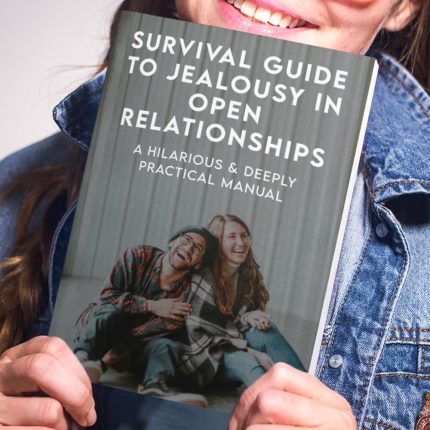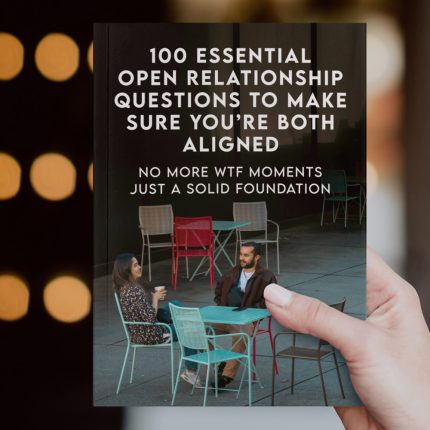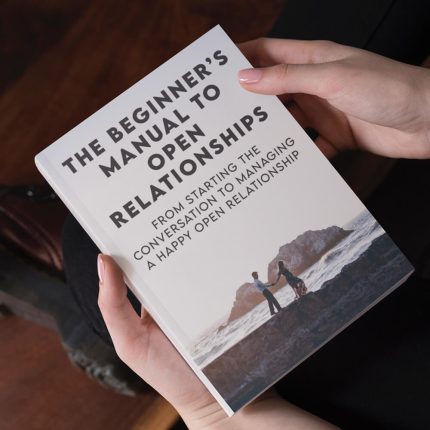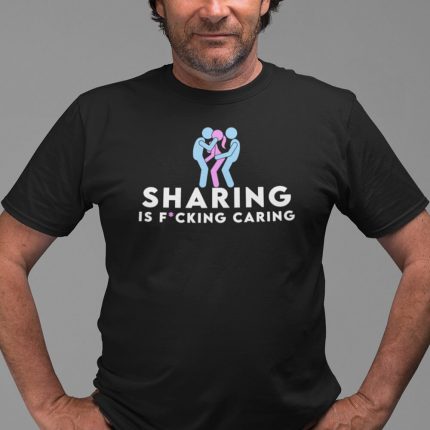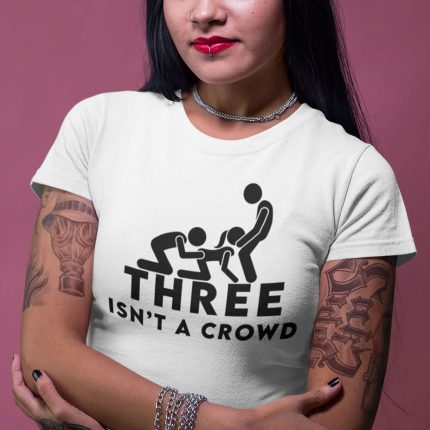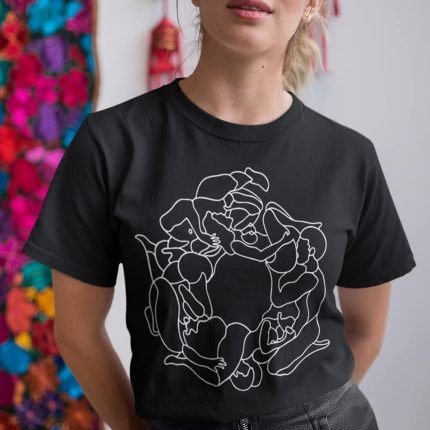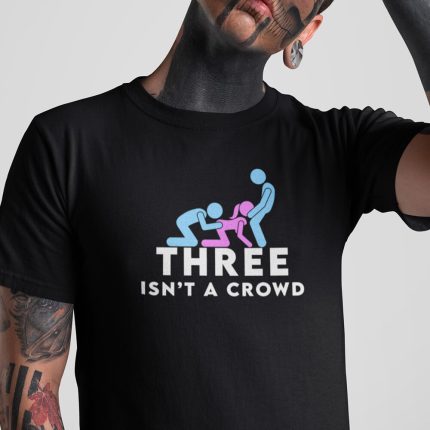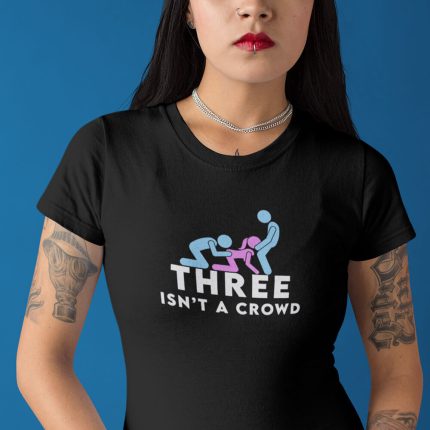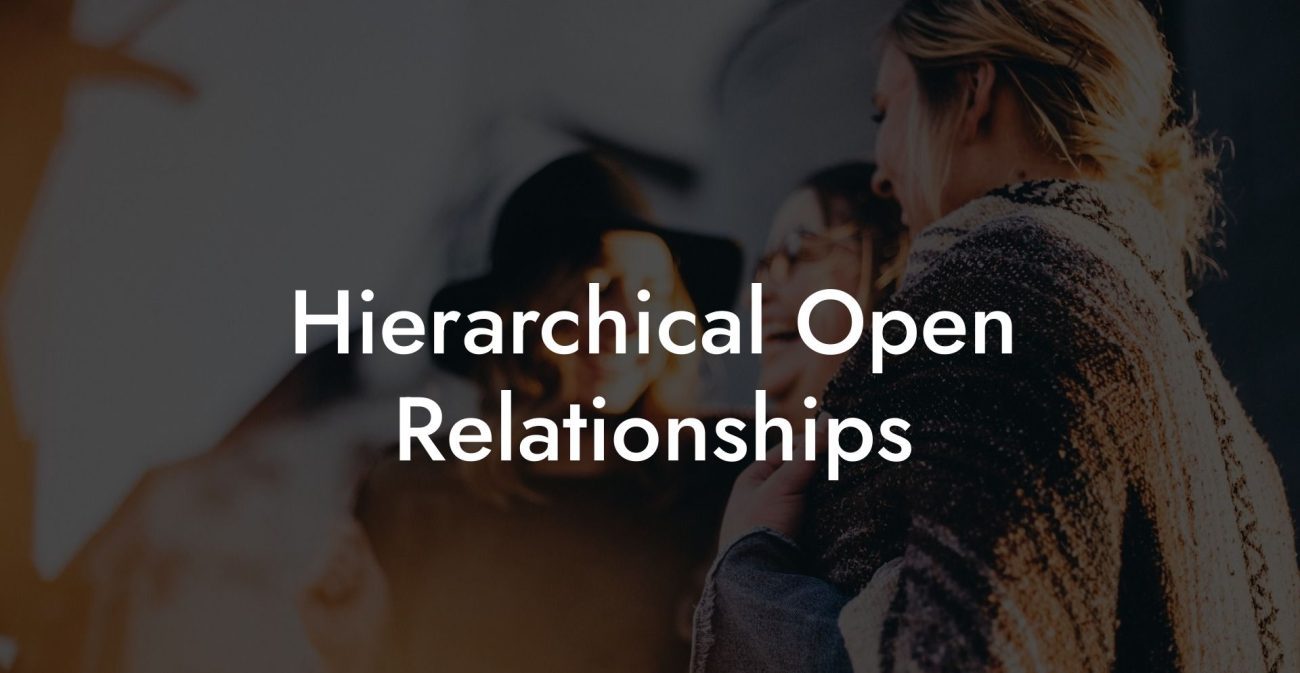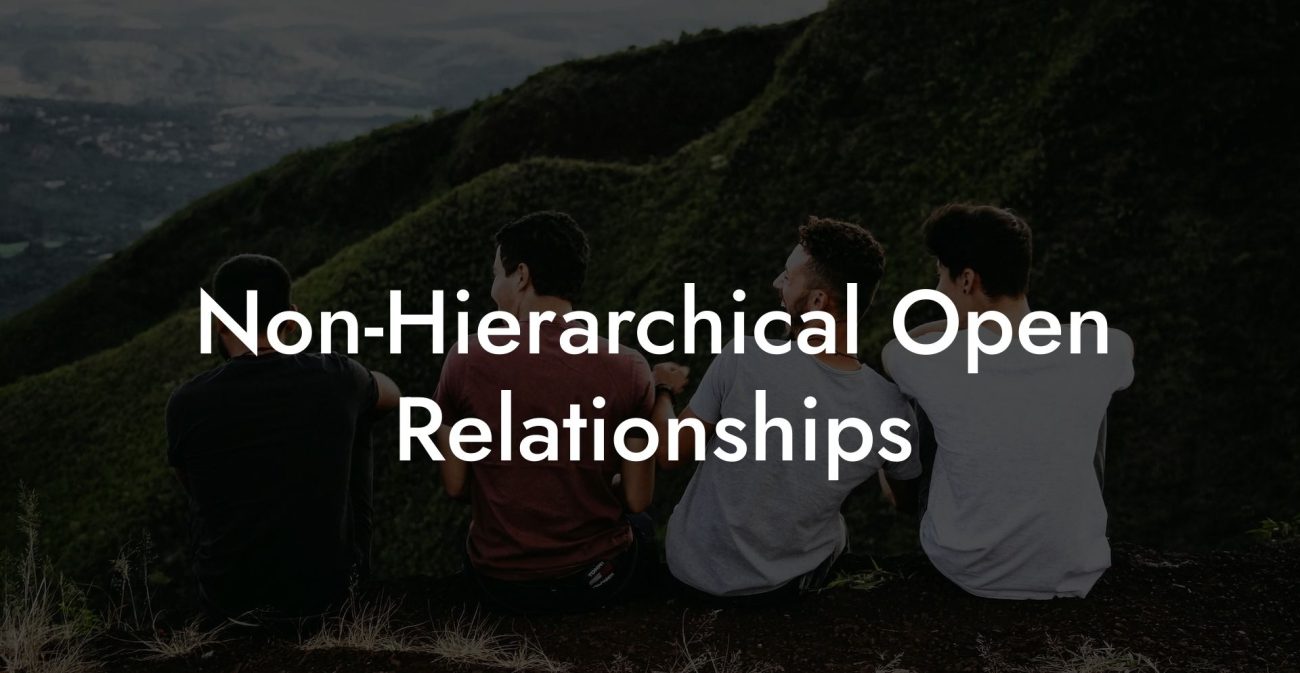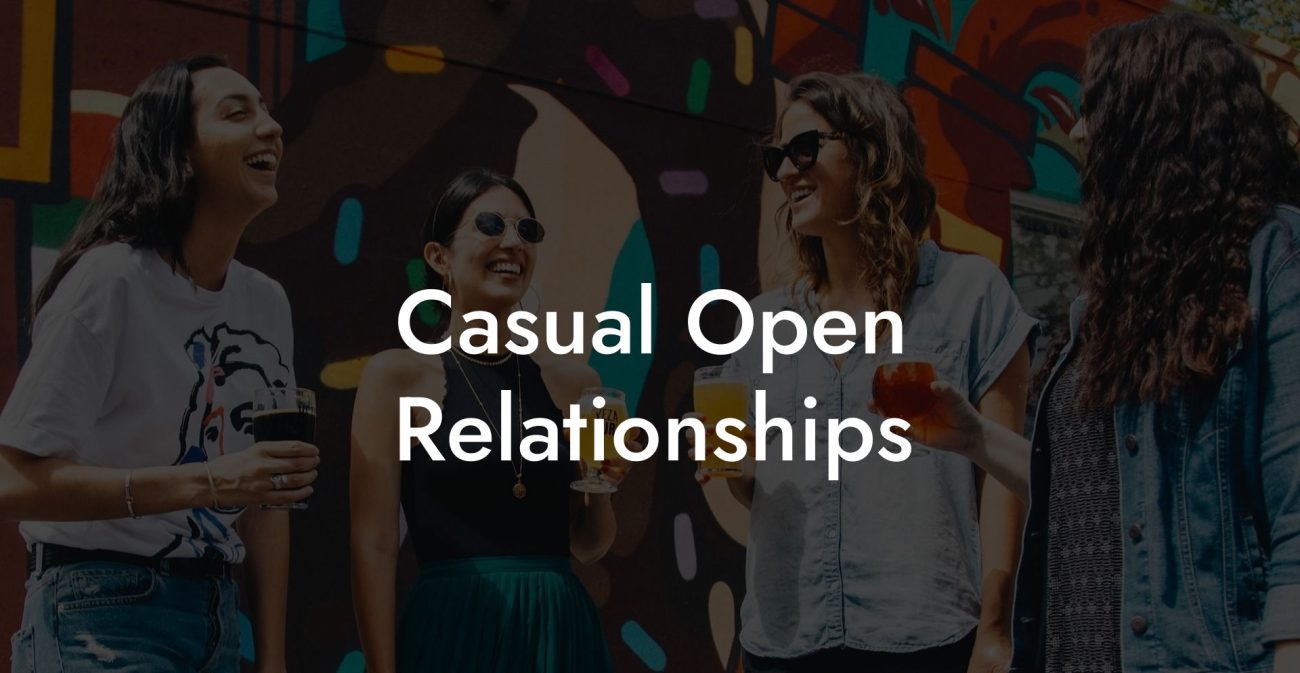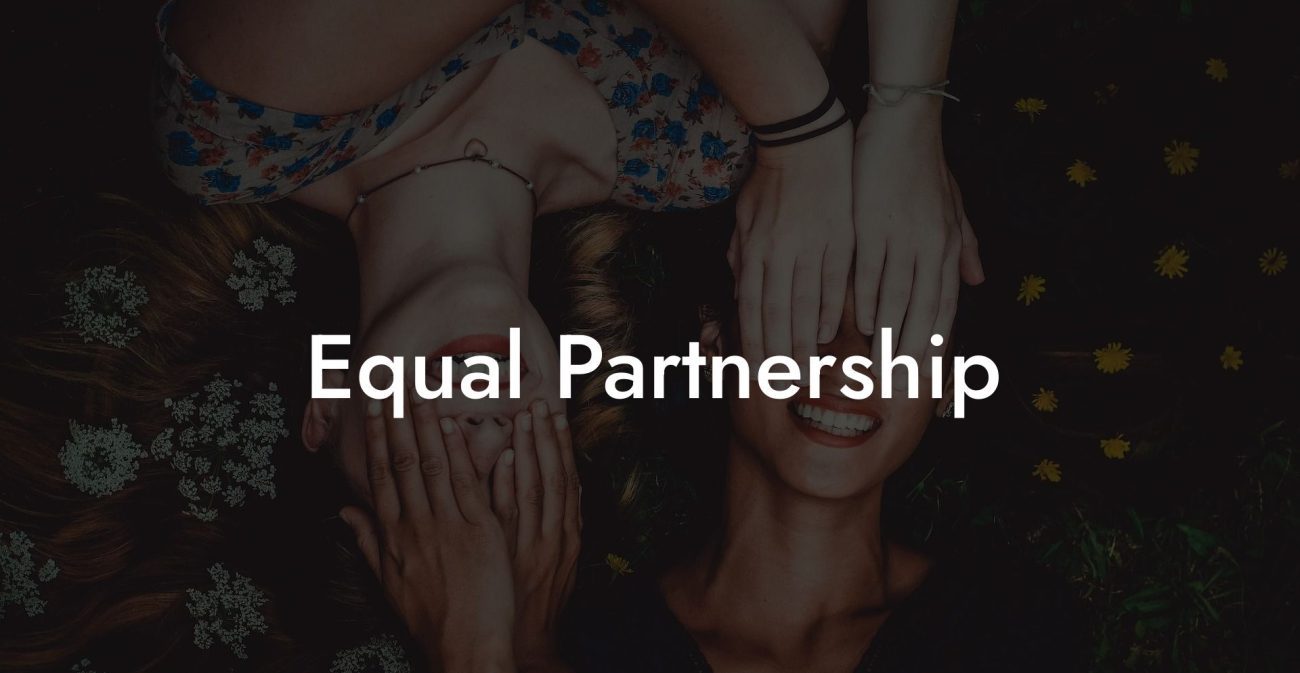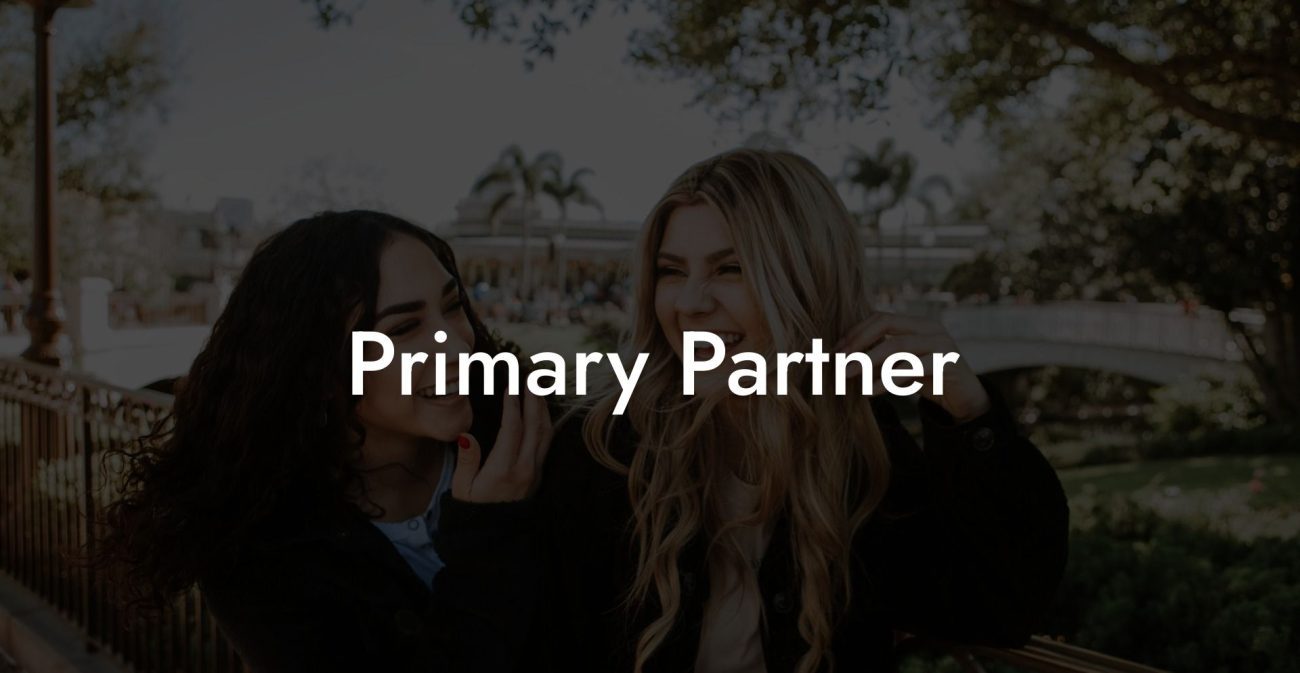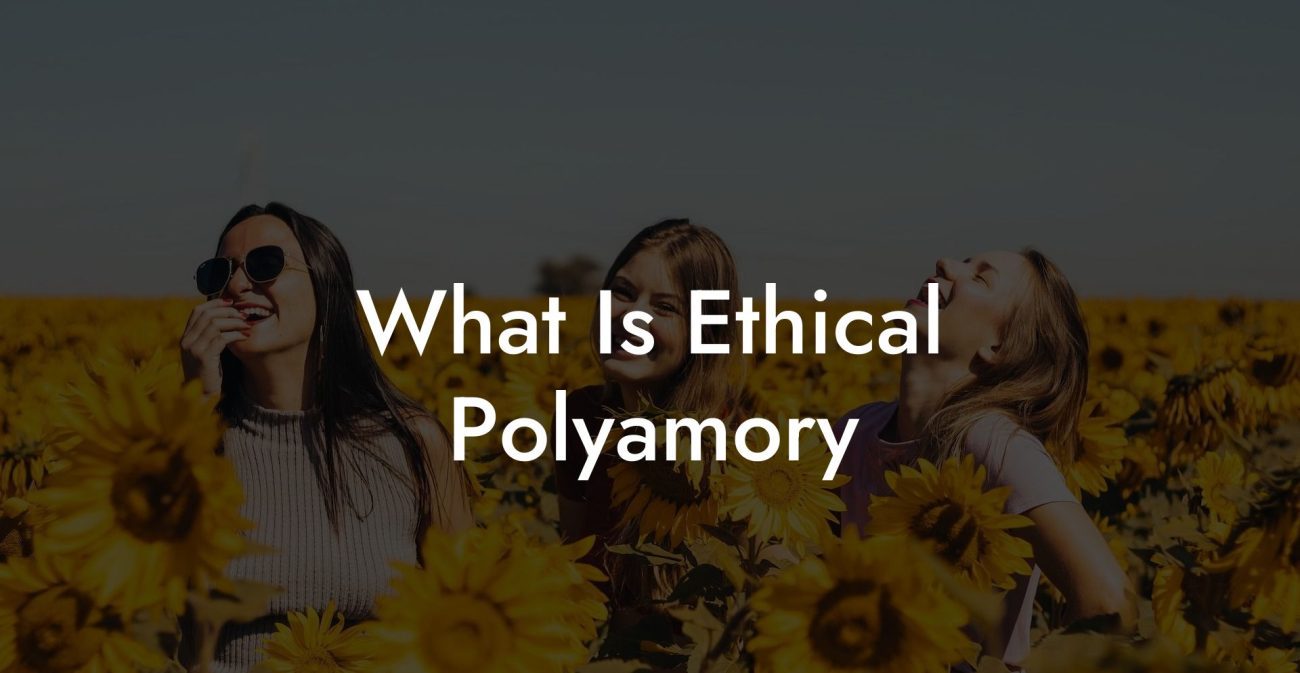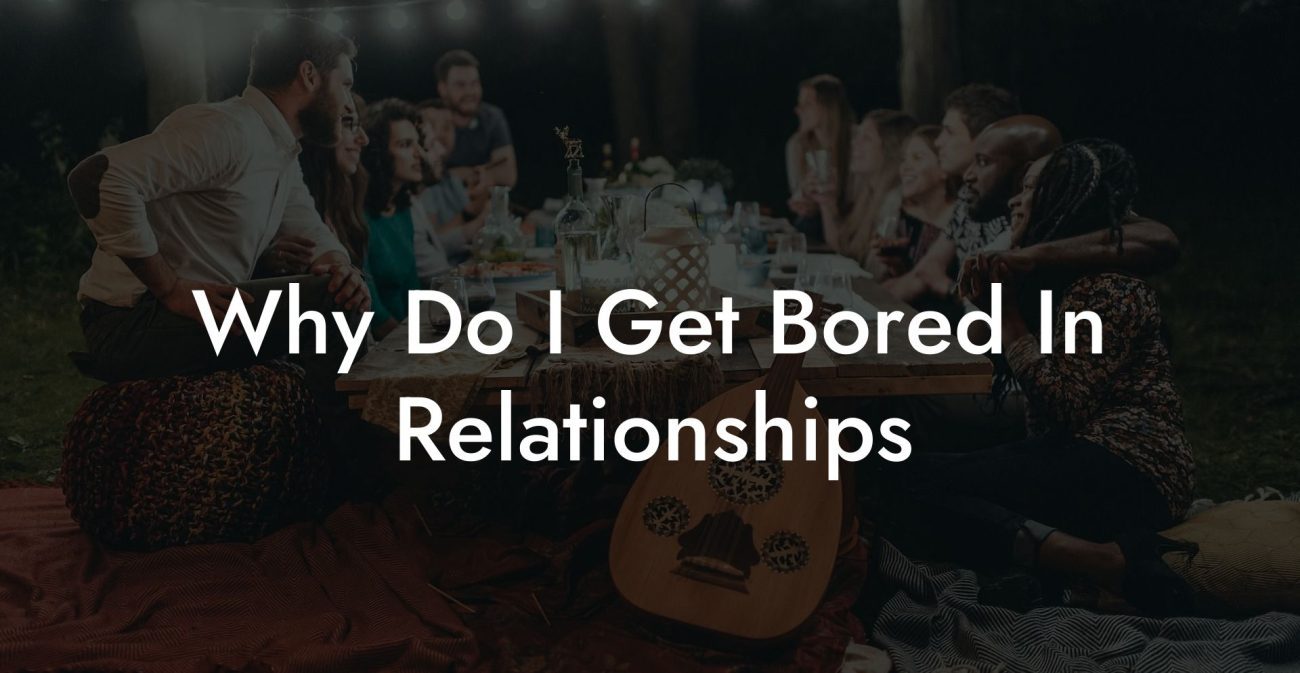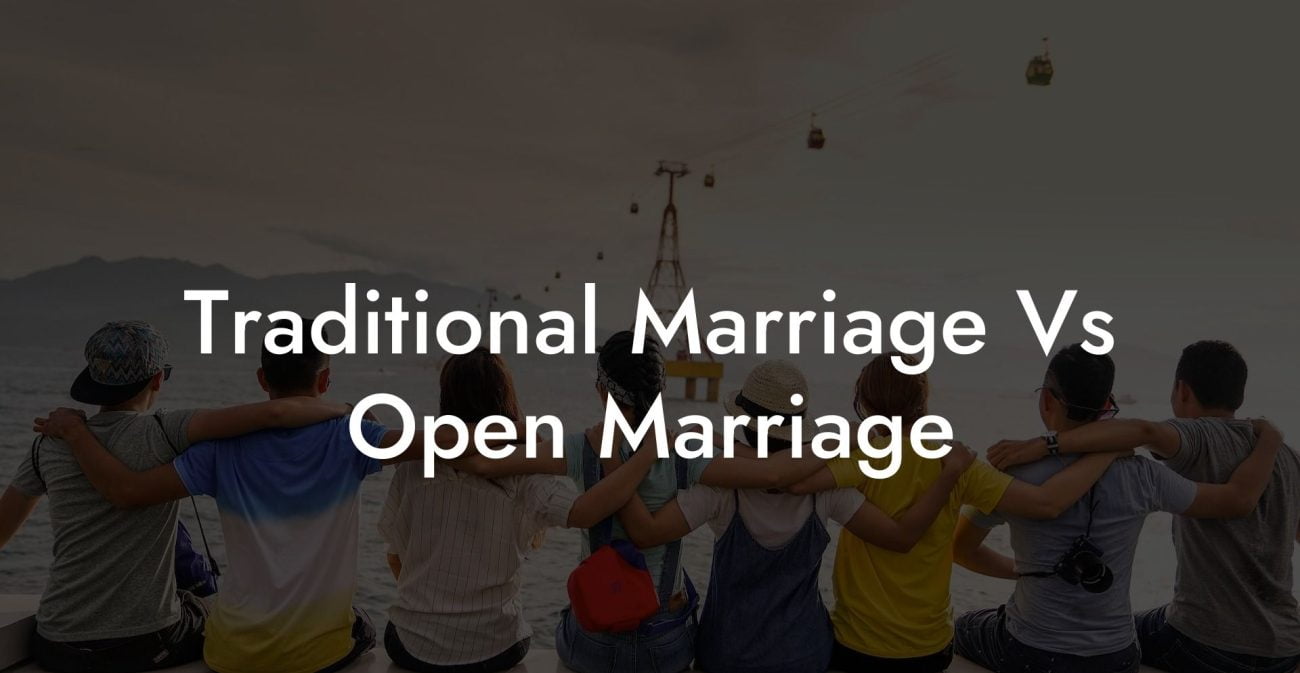Polyamorous vs Open: Key Differences
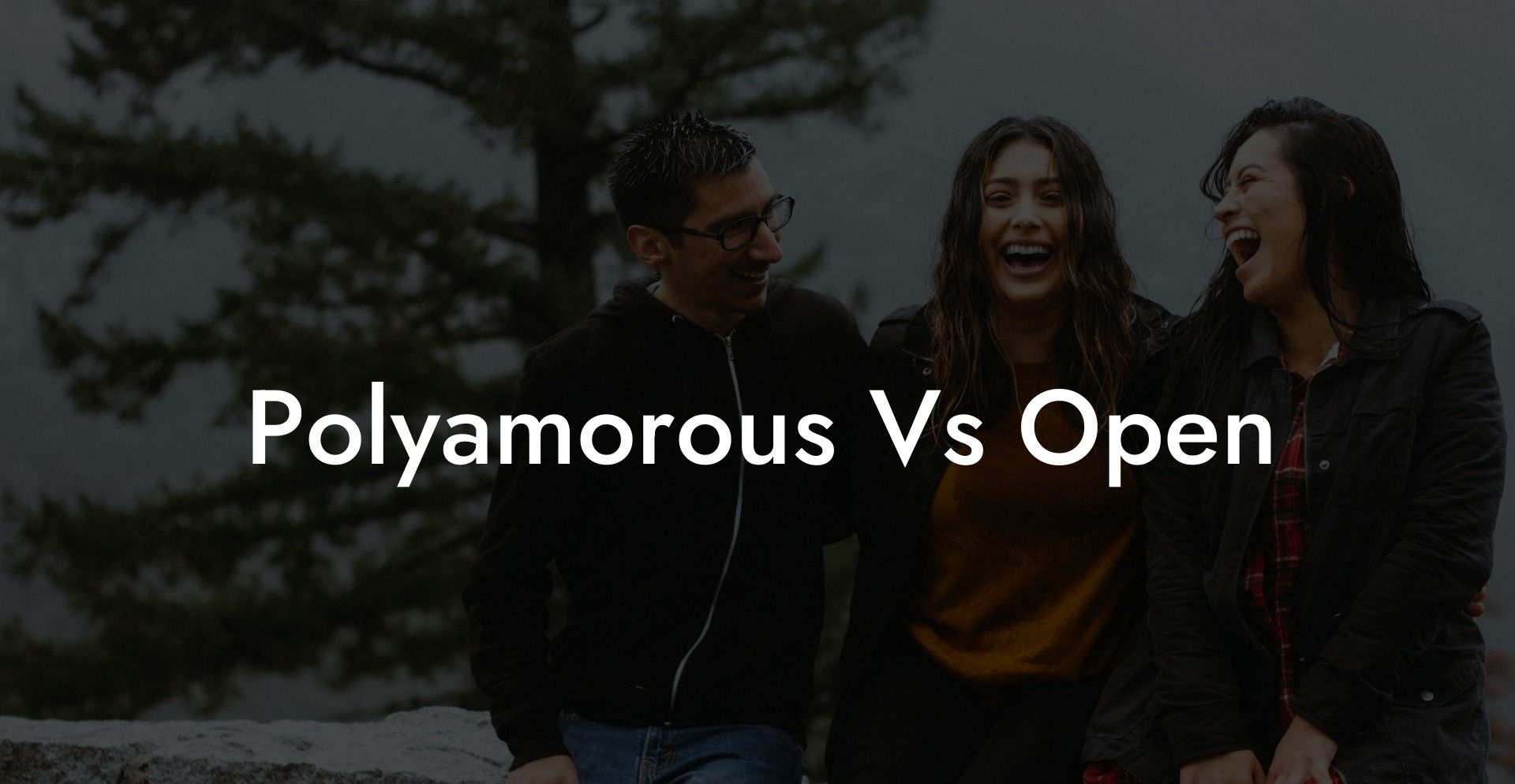
Although both polyamorous relationships and open relationships fall under the umbrella of non-monogamy, they differ significantly in structure, commitment, emotional dynamics, and communication styles. This guide will help you understand these key differences, providing clear definitions, historical context, ethical considerations, and practical strategies so you can decide which model best aligns with your personal values and lifestyle.
Have you ever wondered if monogamy is just a stupid little experiment? Open relationships, polyamory, relationship anarchy...find out which relationship dynamic suits you best with our one minute relationship test. See if you are just conforming to "societal norms". Reveal your truth >>
Quick Links to Useful Sections
- Understanding Polyamorous Relationships
- Definition and Core Principles
- Historical and Cultural Context
- Understanding Open Relationships
- Definition and Core Concepts
- Cultural and Social Perspectives
- Key Differences Between Polyamorous and Open Relationships
- Commitment and Exclusivity
- Relationship Structure and Dynamics
- Communication Requirements
- Legal and Social Recognition
- Emotional and Psychological Dynamics
- Benefits and Challenges
- Benefits of Polyamory
- Benefits of Open Relationships
- Challenges of Polyamory
- Challenges of Open Relationships
- Practical Strategies for Success
- For Polyamorous Relationships
- For Open Relationships
- FAQ: Your Polyamorous vs Open Questions Answered
Understanding Polyamorous Relationships
Definition and Core Principles
Polyamorous relationships involve engaging in multiple consensual romantic or sexual connections simultaneously, where every partner is aware of and agrees to the arrangement. The term “polyamory” derives from the Greek word "poly" (many) and the Latin "amor" (love), emphasizing the belief that love is abundant and not limited to one person. Core principles include:
- Consensual Non-monogamy: All relationships are formed with the full knowledge and agreement of everyone involved.
- Open and Transparent Communication: Regular dialogue is essential for setting boundaries, expressing needs, and resolving conflicts.
- Flexibility: Polyamorous arrangements can vary—ranging from hierarchical models with primary and secondary partners to non-hierarchical structures where all relationships are treated equally.
- Emotional Depth: Many polyamorous individuals seek deep, meaningful connections in more than one relationship.
Historical and Cultural Context
Although the term "polyamory" is relatively modern, the practice of maintaining multiple romantic relationships has historical roots in various cultures. Many indigenous and ancient societies practiced forms of non-monogamy that, while not labeled as polyamory, reflected similar values of diversity in love and connection. Today, polyamory is gaining wider acceptance, particularly in progressive communities that value transparency, autonomy, and inclusivity.
Understanding Open Relationships
Definition and Core Concepts
An open relationship is a consensual arrangement in which a couple agrees to allow one or both partners to have romantic or sexual interactions with others while maintaining a primary bond. Unlike polyamory, which often involves multiple deeply connected relationships, open relationships typically focus on preserving a central, exclusive partnership while exploring additional external connections, which are often more casual.
The core elements of open relationships include:
- Mutual consent: All involved are fully informed and agree to the arrangement.
- Negotiated boundaries: Clear guidelines are established regarding what types of external interactions are acceptable.
- Transparency: Ongoing communication ensures that changes and feelings are shared openly to maintain trust.
- Flexibility: The structure allows the primary couple to explore additional encounters while keeping their core relationship intact.
Cultural and Social Perspectives
Open relationships are often seen as a way for couples to explore sexual variety or new experiences without dissolving their primary bond. This model is gaining acceptance as societal norms evolve and individuals seek ways to enhance personal freedom while preserving long-term commitment.
Key Differences Between Polyamorous and Open Relationships
Commitment and Exclusivity
Polyamorous Relationships: In polyamory, individuals maintain multiple concurrent relationships that can be emotionally significant. Commitment is distributed among these relationships, and the structure may be hierarchical (with designated primary partners) or non-hierarchical (with all partners regarded equally).
Open Relationships: Open relationships revolve around a central, primary couple. While one or both partners are free to engage with others, the primary emotional bond is prioritized, and external interactions are often more casual and less emotionally involved.
EXPLORE OUR ETHICAL NON-MONOGAMY & OPEN RELATIONSHIP SHOP
👨💻👩💻 Digital Store (Instant Download)
🍆💦 Clothing Store (Worldwide Delivery Available)
Sharing Is Caring Unisex T-Shirt (Black)
$29.99It's Not Cheating If He Watches T-Shirt (Black)
$29.99Sharing Is Caring Daddy Cap (Black)
$39.99Three Isn't a Crowd Unisex T-Shirt (White)
$29.99Real Men Share Pop Art T-Shirt (Black)
$29.99Multiple Lovers - Sharing Is Caring Unisex T-Shirt (Black)
$29.99Fuck Each Other Not The Planet Unisex T-Shirt (White)
$29.99I Love Watching Pop Art T-Shirt (Black)
$29.99I Love Watching Pop Art T-Shirt (White)
$29.99Three Isn't a Crowd Unisex T-Shirt (Black)
$29.99Real Men Share Pop Art T-Shirt (White)
$29.99Fuck Each Other Not The Planet Unisex T-Shirt (Black)
$29.99Relationship Structure and Dynamics
Polyamory: Involves a complex network of relationships where each connection may vary in depth and commitment. This model requires ongoing negotiation, high levels of emotional intelligence, and multi-directional communication among all parties.
Open Relationships: Tend to have a simpler structure centered on the primary couple. The focus is on maintaining the core relationship while allowing flexibility for external encounters, which are managed through clear boundaries and dedicated communication between the primary partners.
Communication Requirements
Polyamory: Demands robust communication across multiple relationships. Partners must regularly discuss their needs, negotiate boundaries, and resolve conflicts among all involved, which can be both enriching and challenging.
Open Relationships: Primarily involve communication between the primary couple regarding rules and boundaries for external interactions. The dialogue is usually more focused and less complex, centered on protecting the integrity of the primary bond.
Legal and Social Recognition
Polyamory: Generally lacks formal legal recognition, as most legal systems only recognize monogamous marriages. However, polyamorous communities often create their own support networks and informal agreements to provide structure.
Open Relationships: Also do not receive formal legal recognition, but because they typically involve a primary couple, they benefit from the social and legal structures that support monogamous relationships.
Emotional and Psychological Dynamics
Polyamory: Offers the possibility of diverse emotional support from multiple partners, which can lead to personal growth and enriched experiences. However, it also requires managing complex feelings such as jealousy, and balancing emotional energy can be challenging.
Open Relationships: Focus on a singular, primary emotional connection while allowing additional, often less emotionally involved interactions. This can simplify emotional dynamics, although it may limit the diversity of support available.
Benefits and Challenges
Benefits of Polyamory
- Diverse Support: Multiple relationships offer varied emotional and practical support.
- Personal Growth: Navigating multiple connections can enhance communication skills and self-awareness.
- Flexibility: Polyamory allows for tailored relationship structures that can evolve with changing needs.
Benefits of Open Relationships
- Focused Commitment: The primary bond remains the center of attention, providing stability and security.
- Simplicity: The relationship structure is less complex than polyamory, which can simplify communication and conflict resolution.
- Sexual Exploration: Partners can explore additional sexual or casual romantic encounters while preserving the core relationship.
Challenges of Polyamory
- Complex Emotional Management: Balancing multiple deep connections requires advanced communication and emotional intelligence.
- Time and Resource Allocation: Dividing attention among several partners can be demanding.
- Social Stigma: Polyamorous relationships may face misunderstanding and prejudice from those who favor traditional monogamy.
Challenges of Open Relationships
- Maintaining the Primary Bond: It can be challenging to ensure that external encounters do not undermine the core relationship.
- Boundary Negotiation: Clear rules must be established and maintained to prevent misunderstandings and conflicts.
- Managing Jealousy: Even with clear boundaries, feelings of jealousy can arise and need to be addressed openly.
Practical Strategies for Success
For Polyamorous Relationships
- Regular Communication: Schedule group and one-on-one check-ins to discuss feelings, boundaries, and evolving needs.
- Establish Clear Agreements: Create written or digital agreements that outline roles, responsibilities, and expectations.
- Develop Emotional Intelligence: Practice mindfulness, self-reflection, and seek counseling if needed to manage complex emotions.
- Use Digital Tools: Leverage shared calendars and communication apps to coordinate schedules and maintain transparency.
For Open Relationships
- Focus on the Primary Bond: Prioritize the core relationship by setting clear rules for external interactions.
- Regular Check-Ins: Hold dedicated conversations to ensure the primary couple remains strong and aligned in their expectations.
- Negotiate Boundaries: Clearly define and periodically revisit what types of external interactions are acceptable.
- Maintain Self-Care: Dedicate time to personal well-being through hobbies, exercise, and mindfulness practices.
FAQ: Your Polyamorous vs Open Questions Answered
1. What is a polyamorous relationship?
A polyamorous relationship involves maintaining multiple consensual romantic or sexual relationships simultaneously, with open communication and agreed-upon boundaries among all partners.
2. What is an open relationship?
An open relationship is a consensual arrangement in which a primary couple allows one or both partners to engage in additional sexual or romantic interactions, while keeping the core relationship intact.
3. How do commitment levels differ between polyamory and open relationships?
Polyamory typically involves multiple deeply committed relationships that may be structured hierarchically or non-hierarchically, whereas open relationships focus on preserving a central, exclusive bond with the flexibility for external encounters.
4. What are the key communication differences?
Polyamorous relationships require multi-directional communication among several partners, while open relationships involve focused communication between the primary couple about managing external interactions.
5. What legal and social recognition exists for each model?
Both polyamorous and open relationships generally lack formal legal recognition compared to monogamous marriages, though open relationships are often more socially accepted because they maintain a primary couple.
6. What are the emotional challenges in each model?
Polyamory involves managing complex emotions such as jealousy and balancing multiple deep connections, while open relationships focus on protecting the primary bond and addressing jealousy related to external encounters.
7. Where can I find additional resources on these topics?
Additional resources include books like "The Ethical Slut" by Dossie Easton & Janet Hardy and "More Than Two" by Franklin Veaux & Eve Rickert, podcasts such as "Multiamory" and "Polyamory Weekly," and online communities like r/polyamory.
Resources and Community Support: Your Next Steps
- "The Ethical Slut" by Dossie Easton & Janet Hardy – A seminal work on ethical non-monogamy that explores various relationship models and provides valuable insights.
- "More Than Two" by Franklin Veaux & Eve Rickert – A guide offering practical advice on managing the dynamics of multiple relationships.
- Podcasts: Listen to "Multiamory" and "Polyamory Weekly" for engaging discussions and personal experiences regarding polyamorous and open relationships.
- Online Communities: Join forums such as r/polyamory and other social media groups to exchange ideas and receive support.
- Workshops and Webinars: Attend events focused on relationship psychology and ethical non-monogamy to expand your knowledge and network with like-minded individuals.
By exploring these resources and applying the strategies outlined in this guide, you can develop a clear, informed understanding of the key differences between polyamorous and monogamous relationships. Embrace continuous learning, open communication, and self-reflection as you navigate the diverse landscape of intimacy and commitment.
EXPLORE OUR ETHICAL NON-MONOGAMY & OPEN RELATIONSHIP SHOP
👨💻👩💻 Digital Store (Instant Download)
🍆💦 Clothing Store (Worldwide Delivery Available)
I Love Watching Pop Art T-Shirt (Black)
$29.99Sharing Is Caring Daddy Cap (Black)
$39.99I Love Watching Pop Art T-Shirt (White)
$29.99Multiple Lovers - Sharing Is Caring Unisex T-Shirt (Black)
$29.99Sharing Is Caring Unisex T-Shirt (Black)
$29.99Three Isn't a Crowd Unisex T-Shirt (Black)
$29.99Real Men Share Pop Art T-Shirt (Black)
$29.99Fuck Each Other Not The Planet Unisex T-Shirt (White)
$29.99Fuck Each Other Not The Planet Unisex T-Shirt (Black)
$29.99Real Men Share Pop Art T-Shirt (White)
$29.99It's Not Cheating If He Watches T-Shirt (Black)
$29.99Three Isn't a Crowd Unisex T-Shirt (White)
$29.99Lost & confused by all of the terms, types and seemingly made up 3 letter acronyms?? We've got you. Check out our Ethnical Non-Monogamy Dictionary >>
Useful Interruption: Not sure which relationship vibe fits you best? Take our Relationship Test, it’ll give you the real insight into your natural relationship style. Then, dive into our binge-worthy guides (from the tried-and-true to the “wait, that’s a thing?”) and find the perfect relationship type for your life:
- Monogamy
- Open Relationships
- Ethical Non-Monogamy
- Solo Polyamory
- Non-Hierarchical Polyamory
- Hierarchical Polyamory
- Relationship Anarchy
- Swinging
Now back to the main article but yeah take the test...

